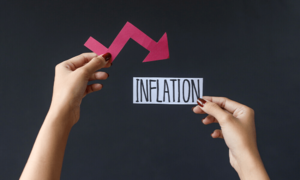SYDNEY: The Australian and New Zealand dollars are each poised to log a second straight week of declines, with their near-term outlook set to be determined by details of expected fiscal stimulus from Beijing and the impact of that stimulus on commodity prices.
Overnight, slightly hotter-than-expected US consumer inflation data did not derail expectations that the Federal Reserve is expected to cut interest rates by a quarter-point in November.
That was why the Aussie bounced from a three-week low overnight and was last up 0.1% at $0.6745 on Friday.
It is still down 0.7% for the week, with support now at 67 cents and the 200-day moving average of $0.6627.
The kiwi dollar traded at $0.6097, after rising 0.5% overnight to be back above its 200-day moving average of $0.6096.
It is set for a weekly drop of 1% after its central bank stepped up easing with a half-point move this week, with more cuts expected.
Critical for the two Antipodean currencies will be the amount of fiscal stimulus from Beijing to be announced on Saturday.
The latest developments in the Middle East will also be in focus as investors await Israel’s attack on Iran.
UBS said investors now expect imminent fiscal stimulus from China of between 2 trillion yuan and 10 trillion yuan ($280 billion to $1.4 trillion).
“If the government announced a RMB1.5-2 trillion fiscal stimulus soon and implemented most of it quickly, we could see this year’s GDP growth reaching 4.8%,” their analysts said in a note to clients.
Australia dollar hampered by risk aversion, kiwi by rate calls
“If these measures are also followed by an additional fiscal boost in 2025 of RMB2-3 trillion, which would help stabilize the property market earlier than we currently project.”
The Aussie is often traded as a liquid proxy for the yuan as China is Australia’s top trading partner. Prices of iron ore - Australia’s biggest export item - rebounded 1.7% on Friday but were still down more than 2% in the week.
Local data on Friday showed food prices in New Zealand rose 0.5% in September, picking up from August.
Two-year swap rates rose 4 basis points to 3.6925%, and markets are now betting the next central bank rate cut will be between 50 and 25 bps, rather than the 75 and 50 bps seen earlier.



























Comments